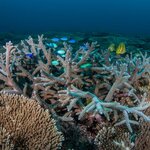Genetics & Molecular Biology

HIV normally uses the CCR5 co-receptor to help it infect immune cells, but the receptor’s Δ32 variant effectively blocks viral entry but a 14-month success story using cord blood containing an HIV-resistance gene variant called CCR5Δ32 means HIV has been cured in a patient.
As reported at the Conference on Retroviruses and Opportunistic Infections, an HIV patient received a blood (iPSC) stem cell transplant for high-risk acute myeloid leukemia and is free of the virus and HIV antiretroviral drug treatment for over a year. The transplanted cells came from two sources: stem cells from a…

Rights are not decided by science but by law and laws are made by man. However, in this scientific age it has been decided that people who are members of a minority by nature generally have the same rights as anyone else. This is known as biological essentialism. Most transgender activist do not accept this, for the sake of discussion let us accept it. Therefore, the question of transgender rights comes down to how science answers the following questions. Do transgender people have the choice of completely conforming to gender norms and just being manly men or feminine women? Does the…

Around the world, populations of many beloved species are declining at increasing rates. According to one grim projection, as many as 40% of the world’s species may be extinct by 2050. Alarmingly, many of these declines are caused by threats for which few solutions exist.
Numerous species now depend on conservation breeding programs for their survival. But these programs typically do not encourage species to adapt and survive in the wild alongside intractable threats such as climate change and disease.
This means some species can no longer exist in the wild, which causes major downstream…

All proteins in a cell are assembled by complicated molecular machines. The cell nucleus is a kind of vault: It is located in the cell and guards the DNA, which contains the building instructions for all the cell's proteins. When the cell needs a protein for a specific task, it orders a transcript of the matching DNA segment in the nucleus. This copy leaves the nucleus and reaches the ribosomes, complex molecular machines. These then work through the instructions step by step to produce the desired protein.
This means that the vast majority of cell molecules are produced outside the…

Did french fries taste better when they were cooked in fat? How about Coca-Cola when it was made with cane sugar or Fritos when they were salty?
People will insist they can tell the difference and they probably can, but sales show that different is not worse. Today, adults are nostalgic about the stuff that older people say is no good.
What about the taste of coffee? It is entirely subjective. Dark roast or light, Arabica or Robusta, you like what you like. What if what you like changes?
A new paper seeks to sound the climate change around using coffee growing conditions.
In their…

The coconut is the sixth most cultivated fruit on earth and thanks to fads around things like coconut oil and water, demand continues to rise.
Growing products that rich people want is great for developing nations but they face challenges. Trees grow slowly and natural plagues Lethal Yellowing Disease put existing ones at risk. The answer may be what made bananas the staple they are now: cloning.
"Coconut plants do not form side shoots. They put all their energy into one shoot that has to grow as fast and as tall as possible. This makes it very difficult to clone and store the plants," said…

A recent blood group analysis of three Neanderthals and one Denisovan confirm their African origin, Eurasian dispersal, and interbreeding with early Homo sapiens. Intriguingly, it also added evidence of low genetic diversity and possible demographic fragility.
Neanderthals and Denisovans are extinct hominin lineages but were present throughout Eurasia from 300,000 to 40,000 years ago. This paper isn't the first time they have been sequenced but using the genes underlying blood groups in previously sequenced genomes of one Denisovan and three Neanderthal females who lived 100,000 to 40,000…

Alternative polyadenylation (APA) is an RNA processing mechanism that regulates gene expression by generating different ends on RNA transcripts of the same gene. Though it affects more than half of human genes, the significance of APA was poorly understood.
Now a new study by The Wistar Institute describes an important function of APA in allowing certain mRNAs to reach specific sites of protein synthesis and reveals that length, sequence and structural properties can determine the destination (and fate) of mRNAs within the cell.
APA) that modifies the tail end of RNA sequences to generate…

Leonardo Da Vinci had no children but he has relatives.
A new study shows how many and corrects some genealogical errors and documents the continuous male line, from father to son, of the Da Vinci family (later Vinci), from progenitor Michele (born 1331) to grandson Leonardo (6th generation, born 1452) to today; 21 generations in all, including five family branches. It identifies 14 living descendants.
Leonardo himself had (at least) 22 half-brothers but no children. The five family branches are traced from Leonardo's father, ser Piero (5th generation), and half-brother Domenico (6th).…

Cheese and insulin are two products most people don't realize were GMOs long before they became the target of anti-science groups. GMOs were instead embraced by activists like Rachel Carson, who saw them as a way to produce a lot more of things like insulin - no pigs needed - while using a lot fewer pesticides for plant crops.
In western nations it remains controversial - though a weedkiller has been found safe by European science authorities yet again it is "socially dead" - but elsewhere not only is science still acceptable, people want more of it.
People are not only fine with GMO cheese…